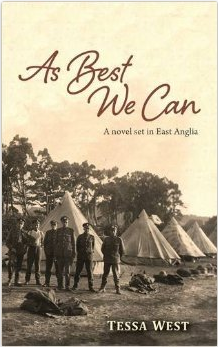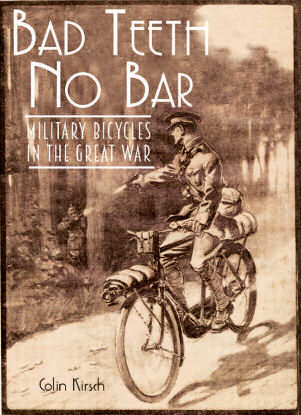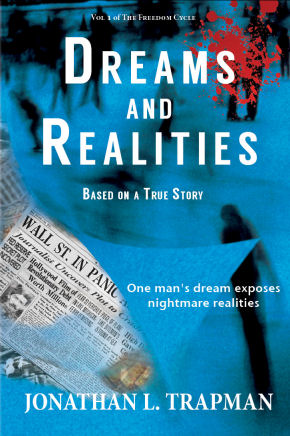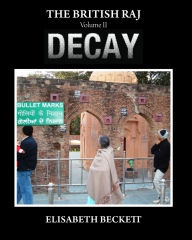|
Novelist Tessa West has released her latest book, a historical
novel featuring the 25th London Bn -
It’s Suffolk. The Bailey family’s two sons Conrad and Lawrence
(25th London Bn) join the colours and are sent to different theatres
of war. Their parents and younger sister Elly stay on a farm belonging
to their relations, in West Stow, a few miles outside Bury St Edmunds.
Life changes for everyone. Hattie Bailey works as a VAD with the Red
Cross at Ampton Military Hospital, while Eric escorts wounded soldiers
off trains arriving at Ingham. Letters home bring news from France and
India’s North West frontier. Elly, hampered by asthma and often left
to her own devices, tries to discover what’s happening at Elveden and
to make sense of what she reads in the Bury Free Press. The conflict
goes on and on, but eventually peace brings hope for the future and
new challenges.
I have read and recommend the book which is available at
Amazon UK in paperback and Kindle e-book :-



http://www.tessawest.co.uk/index.html
Bad Teeth No Bar - Military Bicycles in the Great War
When World War I began, the bicycle was still
fairly new—the big-wheeled pennyfarthing had only recently
given way to the vastly more nimble and speedy safety bicycle,
and while bicycles and bicycling were no longer the fad they
had been in the 1890s, they were nonetheless still an
indicator of up-to-date modern life. It’s thus no surprise
that bicycles were quickly pressed into service at the
outbreak of hostilities. At a moment when armies across Europe
were still practicing cavalry charges with horses, and it was
far from clear what role motorized transportation would play
in the war, bicyclists were called upon to play a variety of
roles by armies on both sides, including as messengers,
scouts, and guides.
Bad Teeth No Bar,
which takes its name from an advertisement asking cyclists to
volunteer, is a beautifully illustrated appreciation of the
role played by bicycles in the Great War. Full of color
photographs of vintage bikes and their riders, illustrating
accounts of their long-forgotten exploits, it illuminates a
little-remembered aspect of the war and celebrates a set of
unsung heroes. Perfect for vintage bicycle enthusiasts and
military history buffs alike, Bad Teeth No Bar is a
remarkable centennial celebration.
The book is
available from booksellers including –
Amazon.uk
University of Chicago Press (US)
Booktopia (Australia)
|
|
 |
|
Based on a True Story
DREAMS AND REALITIES
by Jonathan L. Trapman
JONATHAN L. TRAPMAN
presents an epic journey within this heptalogy (series of
7) and dynastic tale taking its starting point from a true story
his forebear initiated, some 230 years ago. An action changing the
course of history.
Through the lens of seven individual
journeys, truths, realities and all kinds of deception are
revealed. The hero in each confronts the very tenet upon which
humanity's journey is mapped out upon.
Moving through time,
space and beyond what we believe we know, clues as to what lies
behind our existence and its purpose are discovered. The key, the
quest of many, awaits a master locksmith on the road to freedom.
See the real life of
Capt. Albert Henry William TRAPMANN /
TRAPMAN former Capt. / Adjutant with the
26th Middlesex and then the 25th London (Cyclists) Battalion.
Purchase the book
|
|
 |
|

My thanks to Russell Ridout for providing the
above booklet. |
|
Download the full Standing Orders as a PDF
(
B&W printable file with L & R gutters)

Order a printed copy (B&W, A5 size, 57
pages)
US$6.68 (plus postage) (Sold
at cost price)

|
Amritsar uprising - 1919
The inquiry after the Amritsar uprising was critical
of Gen. Dyer. Most books use material from the inquiry and tend to
reflect this view. However many people support Dyer's action, and the
most recent publication on the matter 'Decay' by Elisabeth Beckett gives
a look at the other side of the argument. It should be read alongside
any of the other publications, then it's up to the reader to decide.
Most of the other books on Amritsar are available on AbeBooks.com,
often very cheaply from $1.00, or obtained on inter-library loan from
your local library.
- The British Raj Volume II, Decay by Elizabeth Beckett - 2012.
 |
This book began life as a manuscript written by Elisabeth Beckett, daughter of a High Court Judge in India, married to a District Officer in the Indian Civil
Service, fluent in Urdu and with many Indian friends. It was written after many years research into the events which occurred at Amritsar on 13 April 1919.
Using contemporary accounts and official documents, Elisabeth has assembled information not readily available to the generality of readers, about the people and events which culminated in the series of riots in India in 1919, of which, Amritsar was only one example. She highlights the distortion of facts which makes up the official version and which were portrayed in the Attenborough film "Gandhi".
The book centres on General Dyer, the man who ordered the firing on 13 April 1919 - an action which has been called the cause of the end of the British Empire. Dyer was vilified for his action, ordered to retire and refused the Court Martial he requested in order to clear his name. In the House of Commons debate on the disturbances, he was accused of terrorism by Edwin Montagu, the Secretary of State for India who had made friends with the Indian Nationalist politicians behind the insurrection. Elisabeth set out to restore the reputation of a brave and honest man.
The book has been edited for publication by John Wrake.
See a Review.
Available for purchase at - https://www.createspace.com/3688567 |
- Amritsar and our duty to India - by B.G. Horniman.
- British Administration and the Amritsar Massacre - by B.G.
Horniman.
This book records the gruesome massacre of Amritsar of 13th April 1919 and other blood curdling stories of most heinous crimes and brutal atrocities committed on innocent people of the then Punjab for three months of martial law promulgated by its British.
- The Butcher of Amritsar : General Reginald Dyer - by Nigel
Collett.
- The Amritsar Massacre : Twighlight of the Raj (1st pub. as
- Amritsar, the massacre that ended the Raj) - by Alfred
Draper.
For my non-fiction book about the Amritsar Massacre of 1919, I spent many hours in the India Office Library studying contemporary documents. The Public Records Office provided valuable previously unpublished material. In India I spent days in the Indian Archives building, and in the Nehru Museum in Delhi I was able to study previously unpublished material, which shed fresh light on the massacre. In Amritsar I visited the Jallianwala Bagh site of the massacre, now a national shrine -- and was able to interview several people who survived the massacre. The Golden Temple was also a source of invaluable material. In a small village near Bristol where General Dyer, the perpetrator of the massacre, died, I managed to find an elderly lady who actually knew Dyer, and she was able to pass on to me his thoughts on the massacre so many years later.
[http://www.peterkinsley.com/ehabit2.html]
- The Amritsar Massacre - by Tim Coates
The story of the action taken by Brigadier-General Dyer at Amritsar
in the Punjab in 1919. Faced with insurrection in support of Mahatma
Gandhi, the British Army declared martial law. Violent rioting in
Amritsar brought the Brigadier to take astonishing action, including
the shooting of over 300 unarmed people at a public meeting.
Regarding the subsequent native obedience as a satisfactory result,
he was surprised to find himself removed from active command and he
made lengthy representations to Parliament protesting at his
treatment. This book contains the report of the Hunter Committee appointed
by the Government of India to investigate, Disturbances in the
Punjab, published in 1920, and Brigadier-General Dyer's own
statement submitted to the Committee.
- Imperial Crime and Punishment: The Massacre at Jallianwala Bagh and British Judgment, 1919-1920
- by Helen Fein
Afghan War / Waziristan - 1919
- Waziristan, 1919-1920 - by H. de Watteville.
Reprinted 2004 as - Operations in Waziristan 1919-1920
- by Army Headquarters General Staff.
An official account of the British campaign against the warlike tribes of Waziristan, on the badland borders between Afghanistan and British India in 1919-20. The book begins with an extensive backwards look to previous, 19th century, campaigns in the same mountainous region. The powerful Mahsud tribe took advantage of
Britain's involvement in the Great War to launch incursions in the summer of 1917, but the British took firm defensive action and peace was restored. Similarly, the Waziris took advantage of unrest in Afghanistan to launch raids against British posts, to which the British responded with punitive force, including the use of aircraft to spot and bomb the hostile tribes. After 12 months of sporadic fighting, operations ceased. The account of the campaign ends with an appreciation of the lessons learned, including the use of aircraft to overawe the tribesmen. The text is accompanied by 21 photos, six maps, eight panoramas, photographs., and a glossary of common Waziri words.
[http://www.naval-military-press.com/product.php?productid=20560&cat=0&page=1]
-
Third Afghan war 1919 Official account - by the
General staff branch, Army headquarters,
India.
The Third Afghan War was fought in the wake of the Great War, when Amanullah, AfghanistanÕs Amir (ruler), aided by Pashtun (Pathan) tribal allies, and emboldened by an alliance with the new Bolshevik regime in Russia, took advantage of BritainÕs post-Great War weariness and nationalist unrest in India itself, to launch two surprise strikes into the North-West frontier region of British India in May 1919. The short-lived war that followed saw Britain check the thrusts and launch a counter strike in Baluchistan which took the town of Dakka. Britain also launched air-raids on the Afghan capital, Kabul, and the city of Jalalabad. The war ended in stalemate, and Britain granted autonomy in foreign affairs to the Afghanis in the Treaty of Rawalpindi. In the fighting, British and Indian Army troops lost nearly 2,000 men, many of them to cholera, while Afghani losses were estimated at 3,000. This official history gives a detailed account of the military action, the lead-up to, causes and course of the war and its lessons. It is illustrated by particularly fine and detailed colour maps and has an appendix of British Army units invloved in the war. SB ii+174pp 23 maps (6 in colour) , 2004 N&MP Reprint of 1926 Original Edition.
[http://www.biblio.com/books/60627431.html]
- Crisis on the Frontier: The Third Afghan War and the Campaign in Waziristan 1919-1920
- by Brian Robson.
The Third Afghan War has some claim to be the least-known of all British imperial conflicts - even among military historians. But this was no mere border skirmish: although the fighting lasted barely a month and British casualties were slight in comparison to those suffered in the First World War, the conflict spanned the whole North-West Frontier of India and was important enough to involve the mobilisation of 350,000 British soldiers. Unlike previous conflict in Afghanistan, this was a war of Afghan aggression, which Sir Hamilton Grant, a leading participant, characterised as: 'the most meaningless, crazy and unnecessary war in history.' In the aftermath of the First World War, the Afghan invasion of India in May 1919 and the subsequent fighting along the frontier aroused little interest outside of India, and it has since attracted little scholarly attention. Yet it deployed in India for the first time the full range of modern military technology. Robson clearly outlines the context in which the conflict took place, detailing the uneasy peace between Britain and Afghanistan after the First and Second Anglo-Afghan wars and relations with Waziristan from 1849 to 1919. Illustrated with maps and contemporary photographs, "Crisis on the Frontier" is the definitive account of this important and fascinating chapter in British history.
[http://www.biblio.com/books/167936445.html]
|






